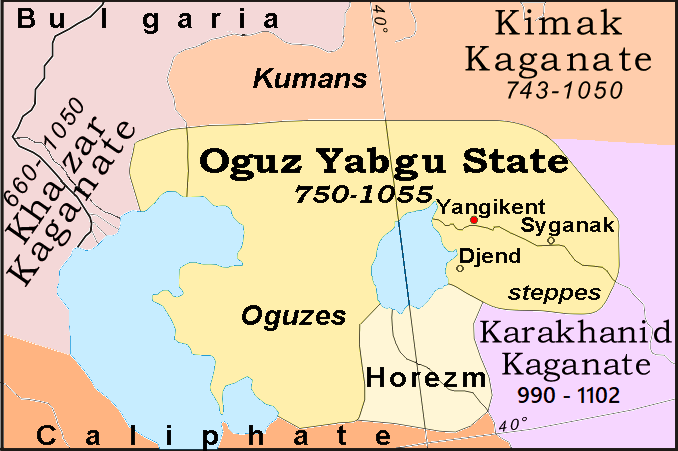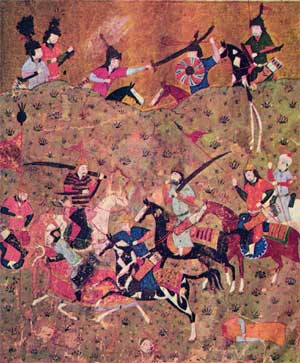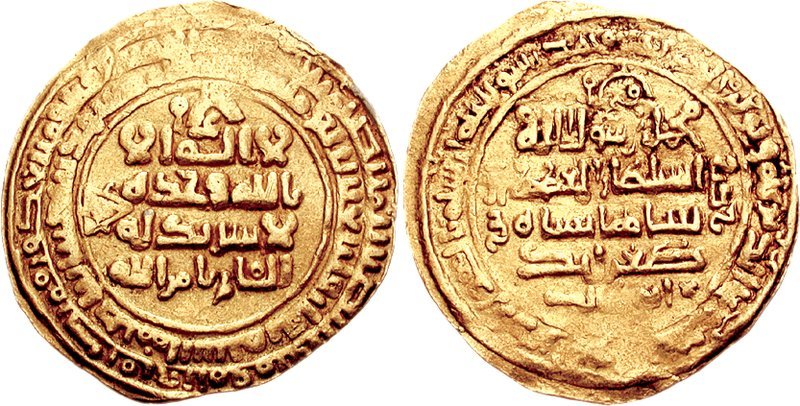|
Mikail Of Kınık Tribe
Mikail was a Turkic chieftain who lived in the 10th century and early 11th century. His father was Seljuk who is known as the founder of the Seljuk dynasty. Although his grandsons would be sultans after his death, Seljuk was only a leader of a tribe named Kınık which was a part of a loosely formed Oghuz Turk confederation (''see'' Oghuz Yabgu State). Mikail was one of the sons of Seljuk Beg. Just like other Oghuz people Seljuk and his sons were initially non Muslim. But after conversion, they began fighting against non Muslims. Mikail was killed in one of these battles. Although his exact death date is uncertain, it must be in the early 11th century (perhaps 1009). ''Mikail Beg'' had two sons: Chagri (989–1060) and Tughril (990–1063). The Seljuk Empire The Seljuk Empire, or the Great Seljuk Empire, was a High Middle Ages, high medieval, culturally Turco-Persian tradition, Turco-Persian, Sunni Islam, Sunni Muslim empire, established and ruled by the Qiniq (tribe), Q� ... [...More Info...] [...Related Items...] OR: [Wikipedia] [Google] [Baidu] |
Turkic People
Turkic peoples are a collection of diverse ethnic groups of West Asia, West, Central Asia, Central, East Asia, East, and North Asia as well as parts of Europe, who speak Turkic languages.. "Turkic peoples, any of various peoples whose members speak languages belonging to the Turkic subfamily...". "The Turkic peoples represent a diverse collection of ethnic groups defined by the Turkic languages." According to historians and linguists, the Proto-Turkic language originated in Central-East Asia, potentially in the Altai-Sayan region, Mongolia or Tuva.: "The ultimate Proto-Turkic homeland may have been located in a more compact area, most likely in Eastern Mongolia": "The best candidate for the Turkic Urheimat would then be northern and western Mongolia and Tuva, where all these haplogroups could have intermingled, rather than eastern and southern Mongolia..." Initially, Proto-Turkic speakers were potentially both hunter-gatherers and farmers; they later became nomadic Pastoralism, ... [...More Info...] [...Related Items...] OR: [Wikipedia] [Google] [Baidu] |
Seljuk (warlord)
Seljuk (died or 1009), variously romanized, was an Oghuz Turk warlord. He was the eponymous founder of the Seljuk dynasty and the namesake of Selçuk, the modern town near the ruins of ancient Ephesus in Turkey. Name The warlord's personal name is Selçuk () in modern Turkish, a name sometimes anglicized to Selcuk. His name varies in different sources and languages. The form (''Selcuk'' or ''Selcük'', or ) appears in Mahmud al-Kashgari's 10721074 Karakhanid Turkish ''Dīwān Lughāt al-Turk'' and in the anonymous 13th15th-century Old Anatolian Turkish '' Book of Dede Korkut''. His name is spelled in Arabic and Persian sources as , , , , and . Romanizations include Seljuk ( or ), Seljuq, Selcük, Seldjuk, Seldjuq, and Saljūq. His name is sometimes given the title bey, also variously romanized. There are different theories about the etymology of Seljuk: * ''selçük'', meaning "small flood" * ''salçuk'', meaning "little raft" * ''salçığ'', meaning "disputant" Acco ... [...More Info...] [...Related Items...] OR: [Wikipedia] [Google] [Baidu] |
Seljuq Dynasty
The Seljuk dynasty, or Seljukids ( ; , ''Saljuqian'',) alternatively spelled as Saljuqids or Seljuk Turks, was an Oghuz Turkic, Sunni Muslim dynasty that gradually became Persianate and contributed to Turco-Persian culture. The founder of the Seljuk dynasty, Seljuk Beg, was a descendant of a royal Khazar chief Tuqaq who served as advisor to the King of the Khazars. in West Asia and Central Asia. The Seljuks established the Seljuk Empire (1037–1194), the Sultanate of Kermân (1041–1186) and the Sultanate of Rum (1074–1308), which stretched from Iran to Anatolia and were the prime targets of the First Crusade. Early history The Seljuks originated from the Kinik branch of the Oghuz Turks, who in the 8th century lived on the periphery of the Muslim world; north of the Caspian Sea and Aral Sea in their Oghuz Yabgu State in the Kazakh Steppe of Turkestan. During the 10th century, Oghuz had come into close contact with Muslim cities. When Seljuk, the leader of the Seljuk clan ... [...More Info...] [...Related Items...] OR: [Wikipedia] [Google] [Baidu] |
Kınık (tribe)
The Qiniq (; ; ; , also spelled Qïnïq, Qynyk or Qynyq) were an Oghuz Turkic ("Turkmen") tribe. Oghuz tribes Oghuz Turks were a branch of Turkic peoples. In the early Medieval Ages, most of them were nomads and their political structure was tribal. There were 22 or 24 Oghuz tribes. The tribes were listed in a number of medieval books with Islamic sources calling Muslim Oghuzes as Turkmen by the 10th century. They were also mentioned in Oghuz legend. According to the myth, there were 24 tribes in two main groups. Each group was represented by three brothers and each brother was supposed to have four sons. In this classification Qiniq tribe is the descendant of Deniz Khan who in turn was in the group of Üçok. Etymology According to Islam Encyclopaedia, Kınık means "Great everywhere". In the 11th-century compendium of Turkic languages Dīwānu l-Luġat al-Turk, produced by Mahmud of Kashgar, the Qiniq tribe is listed first. However, in the list arranged by Rashid-al-Din H ... [...More Info...] [...Related Items...] OR: [Wikipedia] [Google] [Baidu] |
Oghuz Turk
The Oghuz Turks ( Middle Turkic: , ) were a western Turkic people who spoke the Oghuz branch of the Turkic language family. In the 8th century, they formed a tribal confederation conventionally named the Oghuz Yabgu State in Central Asia. Today, much of the populations of Turkey, Azerbaijan and Turkmenistan are descendants of Oghuz Turks. The term Oghuz was gradually supplanted by the terms Turkmen and Turcoman ( or ''Türkmân'') by the 13th century.Lewis, G. ''The Book of Dede Korkut''. Penguin Books, 1974, p. 10. The Oghuz confederation migrated westward from the Jeti-su area after a conflict with the Karluk allies of the Uyghurs. In the 9th century, the Oghuz from the Aral steppes drove Pechenegs westward from the Emba and Ural River region. In the 10th century, the Oghuz inhabited the steppe of the rivers Sari-su, Turgai and Emba north of Lake Balkhash in modern-day Kazakhstan. They embraced Islam and adapted their traditions and institutions to the Islam ... [...More Info...] [...Related Items...] OR: [Wikipedia] [Google] [Baidu] |
Oghuz Yabgu State
The Oghuz Yabgu State or Oghuz il (Old Turkic: Oghuz Land) was a Turkic state, founded by Oghuz Turks in 750, located geographically in an area between the coasts of the Caspian and Aral Seas. Oghuz tribes occupied a vast territory in Kazakhstan along the Irgiz, Yaik, Emba, and Uil rivers, the Aral Sea area, the Syr Darya valley, the foothills of the Karatau Mountains in Tien-Shan, and the Chui River valley (see map). The Oghuz political association developed in the 9th and 10th centuries in the basin of the middle and lower course of the Syr Darya and adjoining the modern western Kazakhstan steppes. Etymology The etymology of the name " Oghuz" is unclear. It was discussed many times in historical and philological literature. The term probably means "tribes", or the "tribal union", and then could turn into a collective ethnic name. By the 10th century, Islamic sources were calling them Muslim Turkmens, as opposed to those of Tengrist or Buddhist religion; and by the ... [...More Info...] [...Related Items...] OR: [Wikipedia] [Google] [Baidu] |
Chagri Bey
Abu Suleiman Dawud Chaghri Beg ibn Mikail, widely known simply as Chaghri Beg (, 989–1060), ''Da'ud b. Mika'il b. Saljuq'', also spelled Chaghri, was the co-ruler of the early Seljuk Empire. The name ''Chaghri'' is Turkic (Çağrı in modern Turkish) and literally means "small falcon", "merlin". Background Chaghri and his brother Tughril were the sons of Mikail and the grandsons of Seljuk. The Great Seljuk Empire was named after the latter, who was a Turkic clan leader either in Khazar or Oghuz states. In the early years of the 11th century, they left their former home and moved near the city of Jend (now a village) by the Syr Darya river, where they accepted the suzerainty of the Karakhanids in Transoxania (roughly modern Uzbekistan and southern Kazakhstan). After the defeat of the Karakhanids by Ghaznavids, they were able to gain independence. Biography Very little is known of Chaghri and Tughril's lives until 1025. Both were raised by their grandfather Seljuk until t ... [...More Info...] [...Related Items...] OR: [Wikipedia] [Google] [Baidu] |
Tughril
Abu Talib Muhammad Tughril ibn Mika'il (), better known as Tughril (; also spelled Toghril / Tughrul), was a Turkoman"The defeat in August 1071 of the Byzantine emperor Romanos Diogenes by the Turkomans at the battle of Malazgirt (Manzikert) is taken as a turning point in the history of Anatolia and the Byzantine Empire. chieftain, who founded the Seljuk Empire, ruling from 1037 to 1063. Tughril united many Turkoman warriors of the Central Asian steppes into a confederacy of tribes and led them in conquest of Khorasan and eastern Persia. He would later establish the Seljuk Sultanate after conquering Persia and taking the Abbasid capital of Baghdad from the Buyids in 1055. Tughril relegated the Abbasid Caliphs to state figureheads and took command of the caliphate's armies in military offensives against the Byzantine Empire and the Fatimids in an effort to expand his empire's borders and unite the Islamic world. Before the advent of the Seljuks, Persia was divided between seve ... [...More Info...] [...Related Items...] OR: [Wikipedia] [Google] [Baidu] |
Seljuk Empire
The Seljuk Empire, or the Great Seljuk Empire, was a High Middle Ages, high medieval, culturally Turco-Persian tradition, Turco-Persian, Sunni Islam, Sunni Muslim empire, established and ruled by the Qiniq (tribe), Qïnïq branch of Oghuz Turks. The empire spanned a total area of from Anatolia and the Levant in the west to the Hindu Kush in the east, and from Central Asia in the north to the Persian Gulf in the south, and it spanned the time period 1037–1308, though Seljuk rule beyond the Anatolian peninsula ended in 1194. The Seljuk Empire was founded in 1037 by Tughril (990–1063) and his brother Chaghri Beg, Chaghri (989–1060), both of whom co-ruled over its territories; there are indications that the Seljuk leadership otherwise functioned as a triumvirate and thus included Seljuk dynasty, Musa Yabghu, the uncle of the aforementioned two. During the formative phase of the empire, the Seljuks first advanced from their original homelands near the Aral Sea into Greater Kho ... [...More Info...] [...Related Items...] OR: [Wikipedia] [Google] [Baidu] |
Seljuks Of Rum
The Sultanate of Rum was a culturally Turco-Persian Sunni Muslim state, established over conquered Byzantine territories and peoples (Rum) of Anatolia by the Seljuk Turks following their entry into Anatolia after the Battle of Manzikert in 1071. The name ''Rum'' was a synonym for the medieval Eastern Roman Empire and its peoples, as it remains in modern Turkish. The name is derived from the Aramaic () and Parthian () names for ancient Rome, via the Greek () meaning the Anatolia. The Sultanate of Rum seceded from the Seljuk Empire under Suleiman ibn Qutalmish in 1077. It had its capital first at Nicaea and then at Iconium. It reached the height of its power during the late 12th and early 13th century, when it succeeded in taking key Byzantine ports on the Mediterranean and Black Sea coasts. In the east, the sultanate reached Lake Van. Trade through Anatolia from Iran and Central Asia was developed by a system of caravanserai. Especially strong trade ties with the Genoese formed d ... [...More Info...] [...Related Items...] OR: [Wikipedia] [Google] [Baidu] |
11th-century Deaths
The 11th century is the period from 1001 (represented by the Roman numerals MI) through 1100 (MC) in accordance with the Julian calendar, and the 1st century of the 2nd millennium. In the history of Europe, this period is considered the early part of the High Middle Ages. There was, after a brief ascendancy, a sudden decline of Byzantine power and a rise of Norman domination over much of Europe, along with the prominent role in Europe of notably influential popes. Christendom experienced a formal schism in this century which had been developing over previous centuries between the Latin West and Byzantine East, causing a split in its two largest denominations to this day: Roman Catholicism and Eastern Orthodoxy. In Song dynasty China and the classical Islamic world, this century marked the high point for both classical Chinese civilization, science and technology, and classical Islamic science, philosophy, technology and literature. Rival political factions at the Song dynast ... [...More Info...] [...Related Items...] OR: [Wikipedia] [Google] [Baidu] |
10th-century Births
1 (one, unit, unity) is a number, numeral, and glyph. It is the first and smallest positive integer of the infinite sequence of natural numbers. This fundamental property has led to its unique uses in other fields, ranging from science to sports, where it commonly denotes the first, leading, or top thing in a group. 1 is the unit of counting or measurement, a determiner for singular nouns, and a gender-neutral pronoun. Historically, the representation of 1 evolved from ancient Sumerian and Babylonian symbols to the modern Arabic numeral. In mathematics, 1 is the multiplicative identity, meaning that any number multiplied by 1 equals the same number. 1 is by convention not considered a prime number. In digital technology, 1 represents the "on" state in binary code, the foundation of computing. Philosophically, 1 symbolizes the ultimate reality or source of existence in various traditions. In mathematics The number 1 is the first natural number after 0. Each natural numbe ... [...More Info...] [...Related Items...] OR: [Wikipedia] [Google] [Baidu] |







